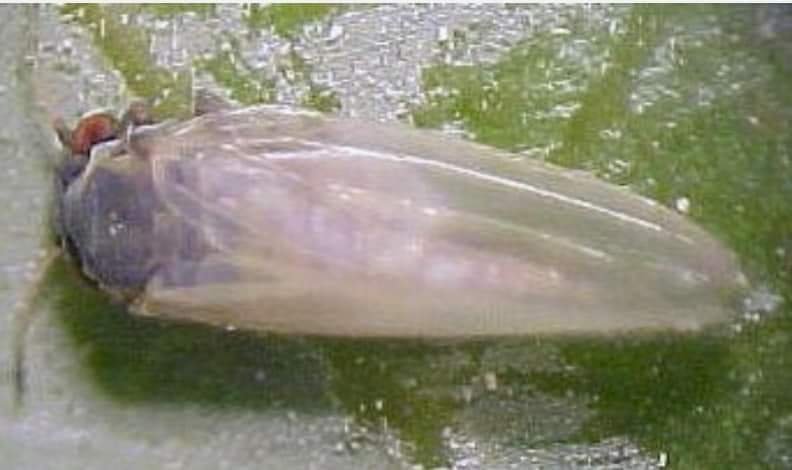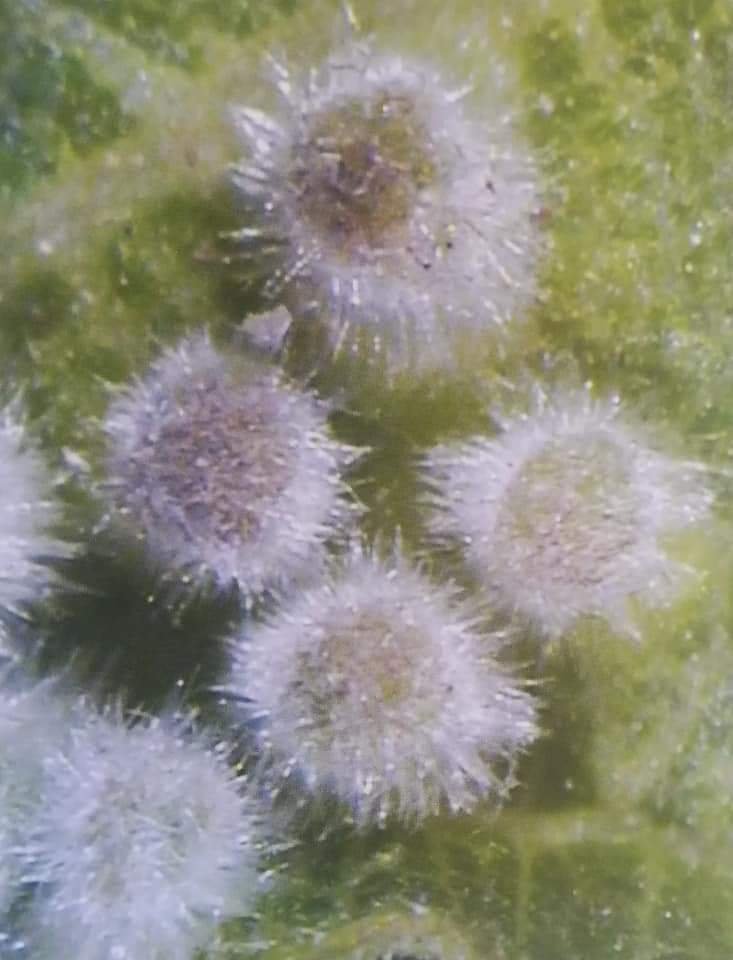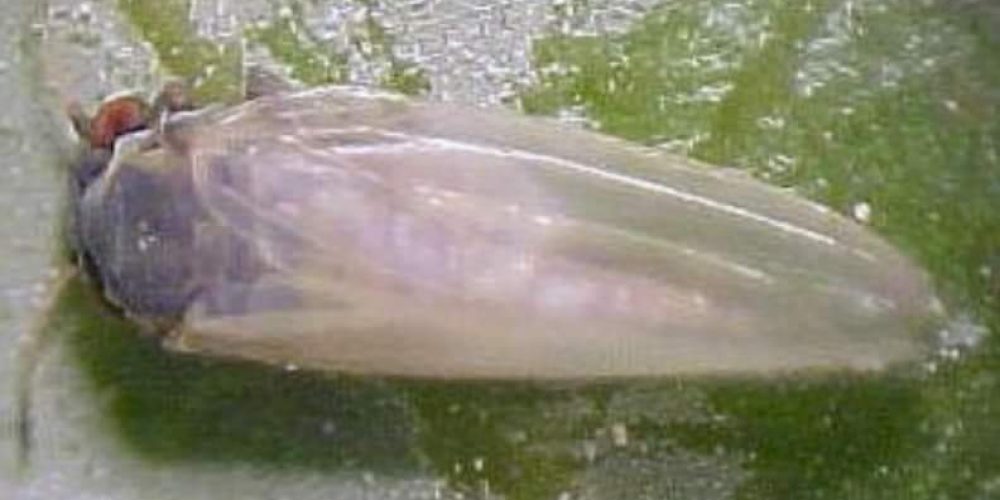Table of contents of the article
ToggleThe fig psylla is considered one of the annoying pests that infect fig trees and affect their growth. In this article on your site, World of Plants, we will shed light on the symptoms of infection and methods of control.
Introduction to the fig leaf psyllid insect
- Trioza buxtoni
- الاسم والعائلة Pauropsylla (= Trioza ) buxtoni (Triozidae/Hemiptera Fig gall psylla
- Scientific name: Triozabuxtoni
- The fig leaf psyllid is one of the few economically important insects that infect fig trees
- This pest is widespread in fig-growing areas around the world, and it may also be found in olive groves near which fig trees are grown.
- Description of the insect
- The fig leaf pea is almost identical to the woolly olive canker.
- The adult insect is about 3-4 mm long. The general color is yellow, and there are brown spots on the abdomen.
- This pest is similar to other wool insects, but the difference is that this insect is usually smaller than the other species



Factors that encourage fig leaf psylla infection
There are factors that encourage fig leaf psyllid infection, the most important of which are five factors:
- Fluctuations in humidity levels, meaning it decreases or increases below the level necessary for the plant.
- High temperatures provide a warm climate for the insect and suit the development of the nymphs.
- Neglecting to care for fig trees by the farmer or farmer also greatly encourages infection.
- Neglecting nitrogen fertilization, high potassium, and high phosphorus also encourages infection.
- Irregular irrigation operations, or the farmer follows a poor method of irrigating trees
- Adult insect: yellow in color with brown spots on the abdomen, 3-4 mm long. The nymph has five teeth, very flat and wide, green in color, and the antenna consists of two rings, the first four times as large as the second.
Life cycle of fig psyllid disease
The insect spends the winter in the adult stage; They appear in the spring when temperatures rise, and begin laying eggs on the lower surface of the leaves. The eggs hatch within 7-10 days to give rise to nymphs, which grow in five instars. Adults of the first generation begin to appear in mid-May in highland areas.
Adults of the second generation begin to appear in late June and early July. The insect has two generations per year.
Symptoms of injury and damage. By fig psyllid disease
- The nymphs suck the plant sap from the leaves, causing swollen petioles
- From the lower surface of the leaf to the upper surface, it contains relatively long white growths. The size of these warts varies. At first they are small at the bottom of the leaf (about the size of a pin head), then they gradually grow to reach several centimeters, distorting the shape of the leaf and affecting it physiologically. At the bottom of the leaf, where the petioles grow, the affected area becomes light in color, and you may see the nymphs in the last instars, flat and slow-moving.
Control of fig psylla disease
It is recommended to spray trees in the spring during the month of March to eliminate the nymphs in their first instars, and to re-spray when necessary in late May with one of the specialized systemic insecticides that are suitable for fig trees.
Symptoms and damage of fig psyllid disease
The insect is found on the lower surface of leaves, and feeds on plant sap. Feeding leads to swelling on the upper surface, and white growths on the lower surface.
It spends its winter hibernation hidden among the branches, in the form of adult insects. In the spring, it begins laying eggs, and its danger intensifies in May.
Prevention and treatment of fig psillosis
- Spraying is done using winter oil with an insecticide such as malathion during the dormant period.
- In May, trees are sprayed with malathion 3 cm3/litre.
Danger of fig leaf psylla
The risk of fig leaf psylla is limited and often of little consequence. However, on the other hand, this insect may be dangerous if it interacts with other pests. This psylla becomes dangerous if it is present with the eastern red wasp, the wax fig insect, and the purple scale insect. Directed and integrated control, especially chemical control, is only used in rare cases with this pest.
Life cycle of fig psyllid disease
The life cycle of the fig leaf pea is completely unknown in Jordan, Syria, and the rest of the Mediterranean countries. Often, the pest overwinters as a nymph or adult hiding in specific areas of trees. Then, in the spring, with appropriate warming, the nymphs develop into adult insects. The number of generations varies depending on the region and the type of plant host of the pest.
Control of fig leaf psyllidum
No specific control of fig leaf besan is recommended. However, control is carried out by resorting to preventive methods before resorting to therapeutic methods.
Preventive control
- Preventive control is carried out by the farmer taking care of the general condition of the planted fig orchards. Before planting, the farmer also pays attention to preparing the appropriate land for planting fig trees and the appropriate dimensions. The farmer takes into account the following points as much as possible when preparing the orchard and protecting it from the pest:
- Plant fig trees at appropriate and spaced distances.
- Planting any vegetables and crops is attracted between the fig trees themselves and the rows of trees.
- The farmer also pays special attention to organizing irrigation operations.
- The farmer conducts deep basic plowing, then superficial hoeing and loosening of the soil to break up the dirt and eliminate pests.
- The farmer monitors the fig orchards periodically and ensures that they are free of pests, especially the wax scale insect, the fig wax bug, the fig borer, and the fig mite.
- The farmer conducts preventive spraying with phosphorus pesticides in the event of an infestation with one of the aforementioned insects.
Therapeutic control
As for therapeutic control, the farmer resorts to it very rarely with this insect, for the following reasons:
- This insect is harmless, of little importance, and does not cause much damage to agricultural production.
- Unnecessary use of pesticides increases costs and reduces benefits to a large extent.
- Also, chemical control causes damage to the environment, biological balance, and biological enemies.
- Control is carried out if the farmer desires by using the pesticide Dimeton-S-methyl before the nymphs appear in the spring. The aforementioned pesticide can also be used when a minor injury occurs, because this injury does not develop in most cases, or its development is very limited. The farmer can also use the pesticide Parathion methyl and Malathion.
Integrated orchard management procedures
Integrated management of the orchard infected with fig leaf psyllid is carried out through:
- Conduct soil excavation and plowing to a depth of 70 cm before planting figs.
- Then the farmer determines the planting distances accurately, which are 6 m between one row and the other, and 4 m between one tree and the next.
- The planting date is carefully chosen in the fall in warm areas, and in the spring in cold areas.
- After that, nitrogenous, phosphorous, and potash fertilizers are added in balance.
- The farmer monitors the trees regularly and periodically to ensure that they are free of insect and non-insect pests and pathogens, and records observations.
- The farmer sprays with preventive pesticides if he suspects any bacterial or fungal disease.
- The recommended pesticides are used, including phosphorous, systemic and surface carbohydrates, and the farmer avoids parathenoid pesticides and hydrogen charcoal derivatives.
- Thus; We have learned about the fig leaf pea and its limited and minimal danger. We also learned about 5 factors that encourage infection with it, and the farmer and farmer who is keen on fig trees has determined the date of control, and the methods of prevention and control followed and applied in the event of infection with this insect or the desire to combat it when necessary. Fruit trees are a blessed treasure and the tree breeder must protect them from various agricultural diseases and pests.
In conclusion, we would like to note that we, at the world of plants website, offer you all the necessary services in the world of plants, we provide all farmers and those interested in plants with three main services::-
- Artificial intelligence consulting service to help you identify diseases that affect plants and how to deal with them.
- Blog about plants, plant diseases and care of various crops ... You are currently browsing one of her articles right now.
- An application that provides agricultural consultations to clients, as well as a service for imaging diseases and knowing their treatment for free – Click to download the Android version from Google Play Store، Click to download the IOS version from the Apple App Store.
Sources
Peas fig leaves; 5 factors that encourage infection of figs, and information of interest to farmers about this pest - faharas
Pauropsylla (= Trioza) buxtoni - ncbt.gov.sy




